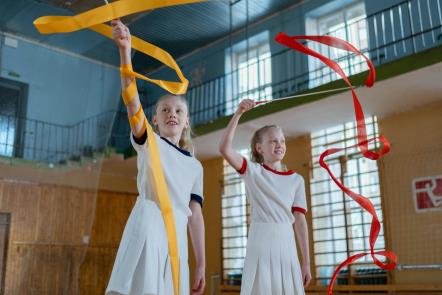Physical Education: Beyond Just Gym Class

Physical education (PE), often referred to as gym class, is frequently viewed as a break from academics, a time for students to run around and burn off energy. While this is certainly a benefit, PE offers a much wider range of advantages that contribute significantly to a child’s overall development. This article delves into the importance of PE, exploring its impact on physical literacy, health, cognitive function, and social and emotional well-being Physical Education.
Building a Foundation for Physical Literacy
Physical literacy refers to the knowledge, skills, and understanding needed to confidently participate in a wide range of physical activities. A well-designed PE program lays the groundwork for physical literacy by introducing students to various movement patterns, such as running, jumping, throwing, catching, and kicking. These fundamental skills serve as building blocks for more complex activities like team sports, dance, or individual fitness pursuits.
PE classes provide a safe and supportive environment for students to experiment, develop confidence, and refine their motor skills. This not only improves their physical capabilities but also fosters a lifelong enjoyment of movement.
Promoting overall health and well-being
Regular physical activity is essential for maintaining a healthy weight and reducing the risk of chronic diseases like heart disease, diabetes, and some cancers. PE programs play a crucial role in promoting physical activity habits in children. Through engaging activities and games, students learn about the importance of exercise, how to set fitness goals, and how to develop healthy routines.
Furthermore, PE classes often incorporate lessons on nutrition and healthy eating habits. Students gain knowledge about the connection between what they eat and their energy levels, performance, and overall health. This empowers them to make informed choices about their diet, contributing to a healthy lifestyle.
Boosting cognitive function
The benefits of PE extend beyond physical well-being and significantly impact cognitive function. Studies have shown that regular physical activity can improve memory, concentration, focus, and academic performance. Physical activity increases blood flow to the brain, which delivers the oxygen and nutrients needed for optimal cognitive function.
PE classes often involve strategy, problem-solving, and quick decision-making, particularly during team sports or games. These activities stimulate the brain in different ways, enhancing cognitive skills that benefit students in all academic subjects.
Developing social and emotional skills
PE provides a valuable platform for students to develop essential social and emotional skills. Team sports and group activities encourage collaboration, communication, and teamwork. Students learn to cooperate, build trust with their peers, and resolve conflicts constructively Physical Education.
PE classes also foster sportsmanship, teaching students to win and lose gracefully, accept challenges, and respect their opponents. These social and emotional lessons learned in PE translate well into other aspects of a child’s life, promoting positive interactions and healthy relationships with peers.
Creating a Positive Relationship with Movement
Unfortunately, children today are increasingly engaging in sedentary activities, leading to a decline in physical fitness and increased health risks. A well-designed PE program can combat this trend by fostering a positive association with physical activity Physical Education.
Through enjoyable and engaging experiences, students learn to appreciate the fun and benefits of movement. PE allows them to explore different activities, discover new interests, and develop a love for physical fitness that can last a lifetime.
Fostering Inclusive Learning Environments
It’s important for PE programs to cater to the diverse needs and abilities of all students. This can be achieved by offering a variety of activities, adapting equipment when necessary, and creating an inclusive environment where everyone feels welcome and encouraged to participate Physical Education.
By promoting inclusivity, PE classes can empower students of all physical abilities to experience the joy of physical activity, fostering a sense of belonging and self-worth.
The Role of Parents and Educators in Supporting PE
Parents and educators play a crucial role in supporting the goals of PE programs. Parents can create a positive atmosphere around physical activity by encouraging their children to participate in PE class with enthusiasm. They can also provide opportunities for physical activity outside of school, such as family walks, bike rides, or playing in the park Physical Education.
Educators can advocate for well-resourced PE programs, ensuring qualified instructors and adequate time for physical activity. They can also integrate movement concepts into other subjects, creating a more holistic learning experience for students.
Conclusion: PE: More Than Just Gym Class
Physical education is a vital component of a child’s education, offering a multitude of benefits that extend far beyond physical fitness. From building a strong foundation for physical literacy to promoting cognitive function, health, and social-emotional well-being, PE plays a critical role in shaping well-rounded individuals. By prioritizing PE programs, creating inclusive environments, and fostering a love for movement, we can empower children to lead healthy, active, and fulfilling lives Physical Education.




